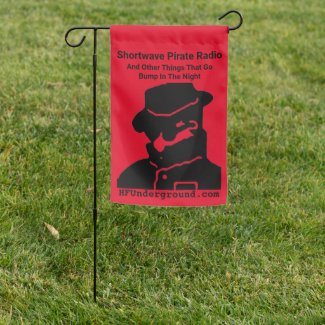331
10/11 meters / 11 meter band activity 14 June 2022 - N1NTE KiwiSDR
« on: June 14, 2022, 1556 UTC »
Via N1NTE KiwiSDR1
Starting at 1545 UTC, noting the taxi cab dispatch ladies are coming in
27.815 MHz AM 27815 AM - Taxi cab dispatch lady - Spanish language YL dispatching taxi cabs
27.795 MHz AM 27795 AM - Taxi cab dispatch lady - Spanish language YL dispatching taxi cabs
27.785 MHz AM 27785 AM - Weak AM signals noted, UNID
27.765 MHz AM 27765 AM - Taxi cab dispatch lady - Spanish language YL dispatching taxi cabs
27.745 MHz AM 27745 AM - Taxi cab dispatch lady - Spanish language YL dispatching taxi cabs
27.695 MHz LSB 27695 LSB - Very busy with Latin American freebanders
27.455 MHz USB 27455 USB - Very very busy, Latin American 11m free band calling frequency
26.945 MHz AM 26945 AM - Spanish language chatter noted, heavy fading (OM stations, not taxi cabs)
26.915 MHz AM 26915 AM - US stations - AM 11M "low channel" DX channel, 915 AM - busy
26.885 MHz AM 26885 AM - Truckers, American accents - English language truckers using export radios
26.765 MHz AM 26765 AM - Taxi cab dispatch lady - Spanish language YL dispatching taxi cabs
26.585 MHz AM 26585 AM - Spanish language, heavy QRM at points, well known Latin American 11m freq
26.555 MHz LSB 26555 LSB - Very very busy, Latin American 11m free band calling frequency
26.035 MHz AM 26035 AM - Spanish language OM and YL heard - possibly taxi dispatch radio or other land mobile user
25.705 MHz AM 25705 AM - Taxi cab dispatch lady - Spanish language YL dispatching taxi cabs
Also want to note that the legal 40 CB channels were pretty busy as well, including 27.255 MHz 27255 CB channel 23 with FSK data bursts and the usual SSB fun on and around channel 38 LSB (27.385 MHz LSB, 27.390 MHz LSB and others)
Starting at 1545 UTC, noting the taxi cab dispatch ladies are coming in
27.815 MHz AM 27815 AM - Taxi cab dispatch lady - Spanish language YL dispatching taxi cabs
27.795 MHz AM 27795 AM - Taxi cab dispatch lady - Spanish language YL dispatching taxi cabs
27.785 MHz AM 27785 AM - Weak AM signals noted, UNID
27.765 MHz AM 27765 AM - Taxi cab dispatch lady - Spanish language YL dispatching taxi cabs
27.745 MHz AM 27745 AM - Taxi cab dispatch lady - Spanish language YL dispatching taxi cabs
27.695 MHz LSB 27695 LSB - Very busy with Latin American freebanders
27.455 MHz USB 27455 USB - Very very busy, Latin American 11m free band calling frequency
26.945 MHz AM 26945 AM - Spanish language chatter noted, heavy fading (OM stations, not taxi cabs)
26.915 MHz AM 26915 AM - US stations - AM 11M "low channel" DX channel, 915 AM - busy
26.885 MHz AM 26885 AM - Truckers, American accents - English language truckers using export radios
26.765 MHz AM 26765 AM - Taxi cab dispatch lady - Spanish language YL dispatching taxi cabs
26.585 MHz AM 26585 AM - Spanish language, heavy QRM at points, well known Latin American 11m freq
26.555 MHz LSB 26555 LSB - Very very busy, Latin American 11m free band calling frequency
26.035 MHz AM 26035 AM - Spanish language OM and YL heard - possibly taxi dispatch radio or other land mobile user
25.705 MHz AM 25705 AM - Taxi cab dispatch lady - Spanish language YL dispatching taxi cabs
Also want to note that the legal 40 CB channels were pretty busy as well, including 27.255 MHz 27255 CB channel 23 with FSK data bursts and the usual SSB fun on and around channel 38 LSB (27.385 MHz LSB, 27.390 MHz LSB and others)



